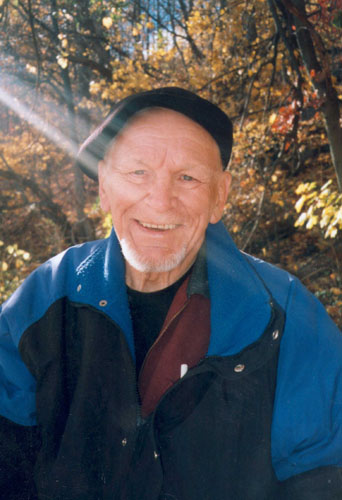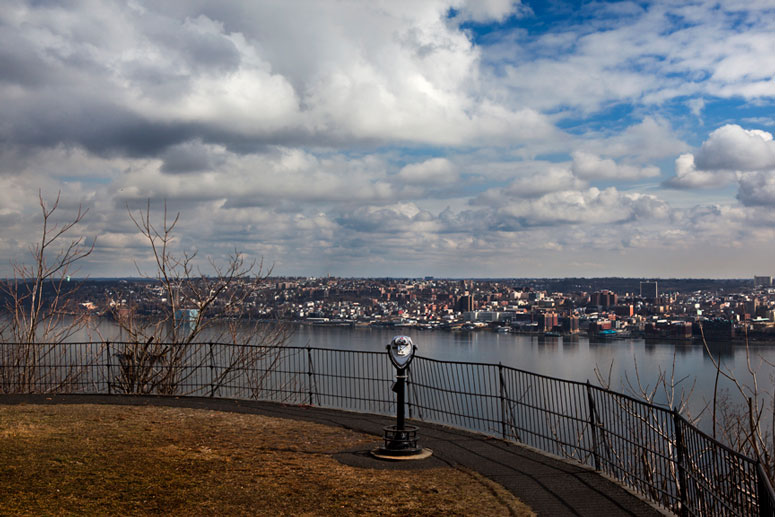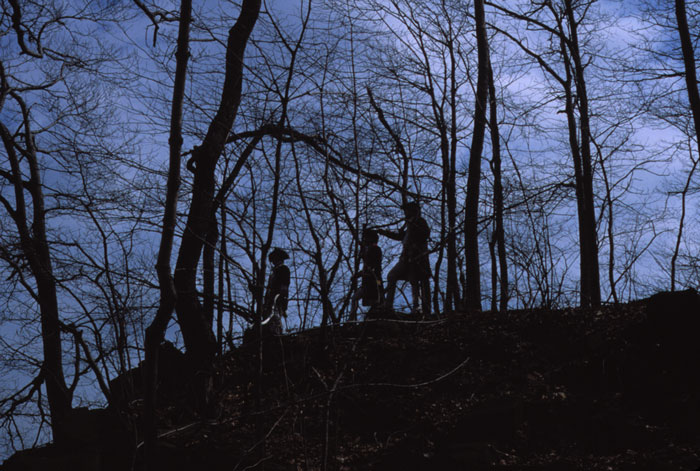In Memoriam John Spring
A “Cliff Notes” Story
January 2016
The park lost a great friend this past year. John Spring, former Cresskill Borough Historian, died on November 23 in Waterbury, Connecticut, after a five-year battle with Alzheimer’s. He was ninety-eight years old.
He was born in Ohio in 1917, the son of a minister. The family moved to Dumont, New Jersey, where John graduated high school, and he then earned his bachelor’s degree in history and political science from the College of Wooster in Ohio. Back in Jersey, he worked as a machinist at Alcoa in Edgewater for thirty-five years, where he also met his love, Sonja. They raised a boy and a girl in Cresskill, and were married for fifty-two years, until her death in 2000.
In the 1960s he served on the board of the Cresskill Tercentenary Committee, and in the 70s on the local Bicentennial Committee. This led to his becoming the town’s historian, and he served a term as the president of the County Historical Society, too. Later on, he would serve as president of the Cresskill Senior Center, and he continued to give historical lectures throughout the area.
In person, John had big hands and an earthy voice that he used deliberately. His friends say he liked to sing and dance, and it was easy to believe that in earlier days he coached kids’ sports teams and performed in musical theater. He was a keen listener, had a sly sense of humor, and his eyes smiled with him.

It’s generally agreed that his greatest contribution to Bergen County history was to identify the Hudson River landing point used by the British forces that captured Fort Lee in November 1776. Widely accepted today, his claim was at first controversial. For decades, it had been “known” that General Cornwallis landed his 5,000 men at the “Closter Dock,” where Alpine Boat Basin is. There was even a well-known landmark there, a historic house called “The Cornwallis Headquarters,” and not one but two plaques that identified the site as the landing point. John’s research indicated that Cornwallis landed a mile-and-a-half downriver at the “New Dock” (later named “Huyler’s Landing”). He surmised that the Closter Landing story was just that — a story, a bit of local folklore. Not everyone agreed with his findings. Press coverage of the debate reached as far as the pages of the New York Times.
The story of those events — both the landing and the controversy over its location — has been told before, in greater detail, and by those more expert than we. But several aspects of the story seem instructive just now, as we reflect on John and the life he lived.
First, it seems worth noting that John hadn’t set out to upend any apple carts. What happened was this. He felt that, if he was to be a historian of Cresskill, he should attend some municipal meetings, even the boring ones. At one of these, a motion was made to vacate an abandoned roadway for a development. It was a run-of-the-mill kind of thing, but it piqued John’s curiosity. The old road was called “Huyler’s Landing Road.” He’d never heard of it before. His investigation led him to Huyler’s Landing on the Hudson, once a thriving little farm landing, then just a crumbling stone jetty at the base of an overgrown trail in the Interstate Park. It was a forgotten place, hidden in plain sight. He read that as many as forty farm wagons a day had once made the trip from the farms of Cresskill and Tenafly to the landing, in order to ship goods to the city. As he followed the paper trail into the nineteenth century, he kept finding references to Huyler’s as the point Cornwallis used for his invasion. Yet Cornwallis’s “headquarters” was upriver at Alpine…
He determined that the more recent accounts were false. And so it began.
He hadn’t set out to create a stir, but his curiosity had led him to an unexpected place — that’s what curiosity tends to do, after all. And that fact, perhaps, helped give him the courage to stand by his results, even as local history enthusiasts and boosters cried foul and tried to dismiss his findings.
A second matter worth reflecting on, we feel, is how this pursuit of simple curiosity resulted in a whole host of unintended — and mostly delightful — consequences. Even the passions he stirred among those who disagreed with his findings helped reinvigorate interest in local history, especially as the Bicentennial neared. (People were actually arguing over Revolutionary War minutia at the local diner!) Moreover, it got hiking enthusiasts and Scout groups interested in fixing up the old Huyler’s trail — now one of the most important and well-used hiking trails in the park. And it forced our own hand, too, so to speak. By casting doubt on the “headquarters” claim, it made us plunge deeper into our own research of the little house in Alpine Picnic Area. It started us on our own journey of curiosity, one that has led to a far richer interpretation of the house and the families who lived in it — and of the riverfront community of which they were part.
And, finally, we are struck that, for all the attention John’s work on Huyler’s Landing garnered — with all the new light it shed on the Cornwallis invasion — John didn’t stop there. When it came to the park, he was just getting started. He went on to explore the unique nineteenth-century African American settlement of Skunk Hollow, up by State Line Lookout. He tracked down former CCC recruits who had built stone picnic tables down at Undercliff Picnic Area and interviewed them. He helped identify remnants of the vast Rio Vista estate that once lorded over the river from Alpine Lookout. And he set out to tell the story of the First World War soldiers who marched from Camp Merritt to Alpine Landing in 1918, at the start of the great influenza pandemic, an event he called, “The March of the Forgotten.” All of it interested him. All of it mattered.

About ten years ago we at last took the “Cornwallis” plaque down from the front of the “Kearney House.” We called John that morning, and sure enough he came down to watch. He even snapped a few shots as we moved the plaque upstairs, to serve as a reminder of how history is a process, not a finished thing. It was something John believed in deeply — something he helped teach us.
John Spring possessed a rare and restless curiosity. We were indeed lucky that it so often turned his mind in our direction.

– Eric Nelsen –

